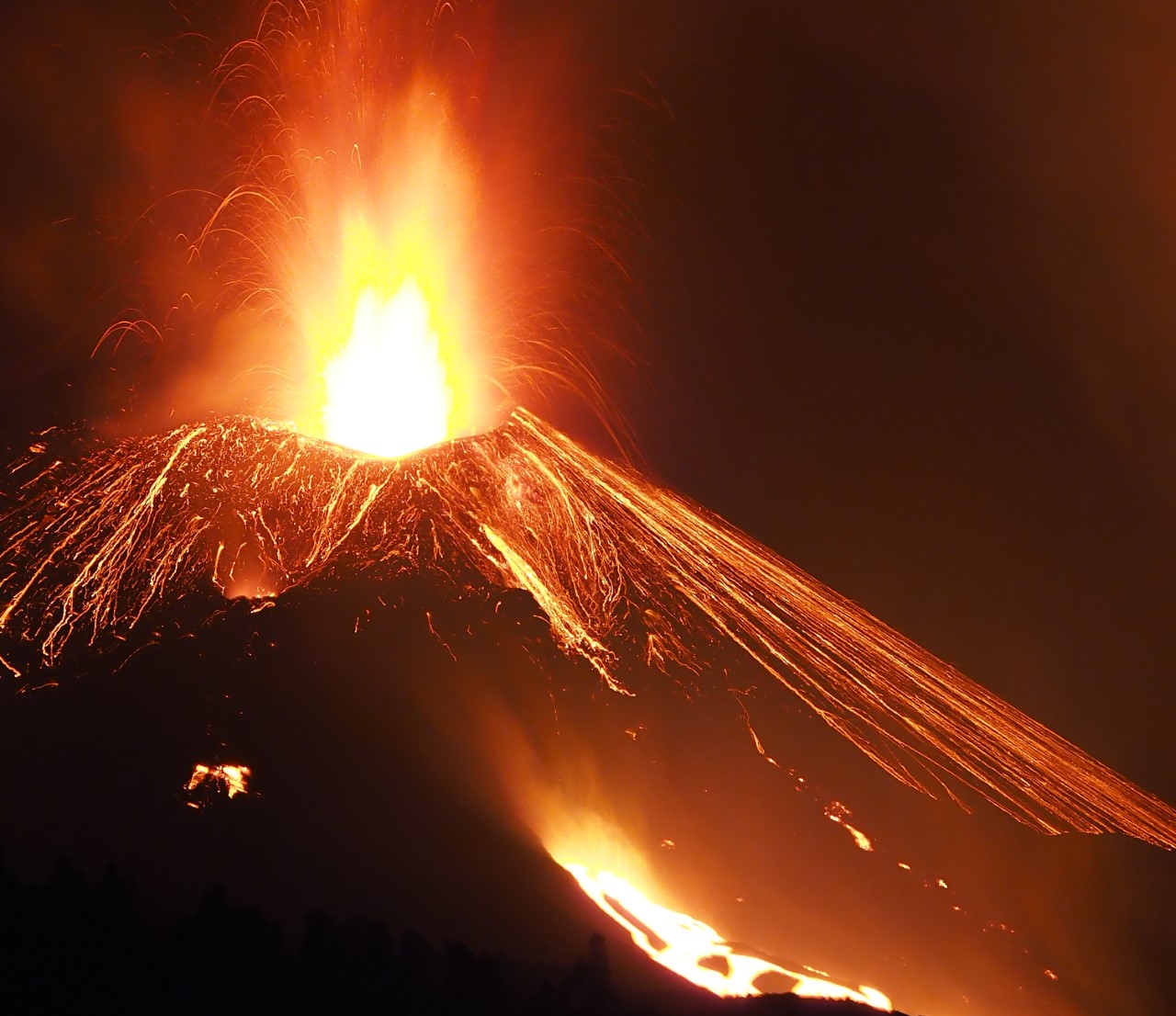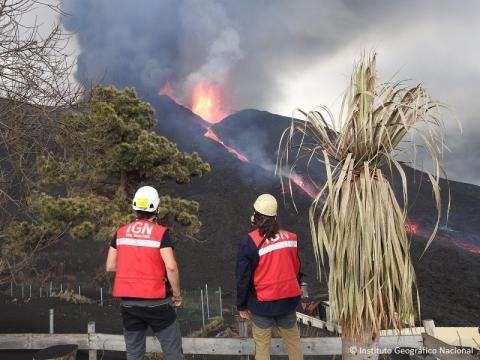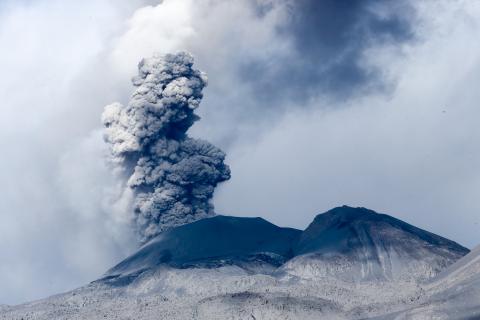The eruption of La Palma in 2021 created an imposing volcano of about 200 metres high and still without an official name. One year later, some seismicity, emission of various volcanic gases such as SO2, CO2 or H2S in the cone and, most worryingly, CO2 emission in the evacuated areas of La Bombilla and Puerto Naos are still being recorded.
The slow cooling of the magma, both at depth and under the cone, is probably the origin of all these phenomena. There are only 10 small earthquakes per day, much lower than those observed during the eruption, but higher than the background seismicity of the island, which was only 20 earthquakes per year. It should not be forgotten that this post-eruptive process could take years to return to pre-eruption levels. A year later, the occurrence of a volcanic reactivation cannot be ruled out either, although the probability is low. To date, no such reactivation has been recorded and, if it were to occur, it would be very clear, as were the six that followed the Tagoro eruption on El Hierro between 2012 and 2014.
Twelve months after the start of this eruption, it is possible to take stock. The first thing to say is that the management of such a crisis is scientifically complex. Although the eruptions give early warning, the indications they give are not clear enough to answer precisely the main questions that the public asks scientists: when and how is the eruption going to happen? In the Canary Islands, eruptions are usually monogenetic, i.e. they generate a volcano that never erupts again. The areas where these eruptions can occur in the Canary Islands are extensive and, for example, in La Palma they involve the southern half known as Cumbre Vieja. This raises a third question: where will the eruption occur?
Volcanology is nowhere near as accurate as other forecasting sciences such as meteorology
Unfortunately, volcanology is nowhere near as accurate as other forecasting sciences such as meteorology. They have a lot of data on the phenomena to forecast and from mathematical models they get their predictions several days in advance. And yet they are not always successful in their forecasts.
Before 2021, there were only instrumental monitoring data for a single eruption in the Canary Islands. Certainly, there are many observations of precursors of numerous eruptions around the world, but each volcano has its own particularities. Even volcanoes with several eruptions per year and with a very complete monitoring system, such as Etna in Italy, show few success stories in predicting when and how each eruption will occur. And the where is not a problem in this case, as it is a polygenetic volcano with repeated eruptions over time.
The difficulty of accurate forecasting
What happened on La Palma since 11 September 2021, when the first pre-eruptive signs appeared in the form of a few earthquakes, is now better understood. That week before the eruption, intense seismic swarms and deformation of up to 30 centimetres were detected, indicating the rise of magma. However, the precise timing of the onset was complicated by the uncertainty and speed of these processes.
It is also possible to speculate on the origin of the first seismic swarms detected since 2017, as well as other geochemical and deformation data collected over the last decade on the island. Different scientific papers are already appearing (e.g. using helium measurements, published by IGN or INVOLCAN) trying to determine the earliest signs of this eruption and similar studies will surely continue to be published in the coming years.
Scientific papers are already appearing that try to determine the earliest signs of this eruption
Obviously, a posteriori it is easier to "predict" a phenomenon that has already occurred. Let us use the following simile: imagine the volcanic precursors as the symptoms of an illness. At first, we start feeling unwell, we start coughing and, after a few days, we get fever and congestion. Finally, we take a covid test with a positive result. At that moment we associate the onset of the disease with the first symptoms, although at that time it was impossible to know what was wrong with us.
Unfortunately, volcanologists do not have an "eruption onset test", models are not yet able to give precise answers to the questions when/where/how and precursors are difficult to interpret. Therefore, much remains to be studied.
The lessons learned after the eruption
First of all, it is curious to note the many technical terms that were previously totally alien to most citizens and are still on everyone's lips today: volcanic tremor, pyroclasts, ash cloud, lava delta or lava tube.
Apart from this, as a society, we have come face to face with the volcanic reality that exists in the Canary Islands. Although there have been quite destructive eruptions in the past on the islands, the one in 2021 can be considered the most catastrophic eruption in the history of Spain, and this is simply due to the fact that our vulnerability has increased and not the inherent danger of eruptions. Today we are more exposed to volcanic hazards due to the increase in population and infrastructure.
Today we are more exposed to volcanic hazards due to the increase in population and infrastructure
Moreover, recent eruptions (Tagoro 2011, Teneguía 1971 or San Juan 1949) caused hardly any damage because, for example, almost no dwellings were found in their path and, on the other hand, the most destructive eruptions are too far in the memory (Garachico 1706 or Timanfaya 1730-1736).
Another aspect to take into account is the increased appreciation of science, something that has also been observed in recent times as a response to the challenges of society. Although science does not have all the answers, it must be trusted to mitigate the various risks to which we are exposed.
Finally, the eruption of La Palma is providing numerous scientific advances. This eruption, the second instrumentally monitored eruption in the Canary Islands, has demonstrated the high speed of volcanic precursors, the importance of automatic analysis systems and the difficulty of making forecasts during the course of the eruption itself.
Over the next few years, the huge amount of existing data will be analysed to try to provide a better response during the next volcanic process. Because, let us not fool ourselves, it is inevitable that one day a new eruption will occur in the Canary Islands, although it is impossible to know whether it will happen in a few years or decades, and we must therefore be as well prepared as possible for it.




